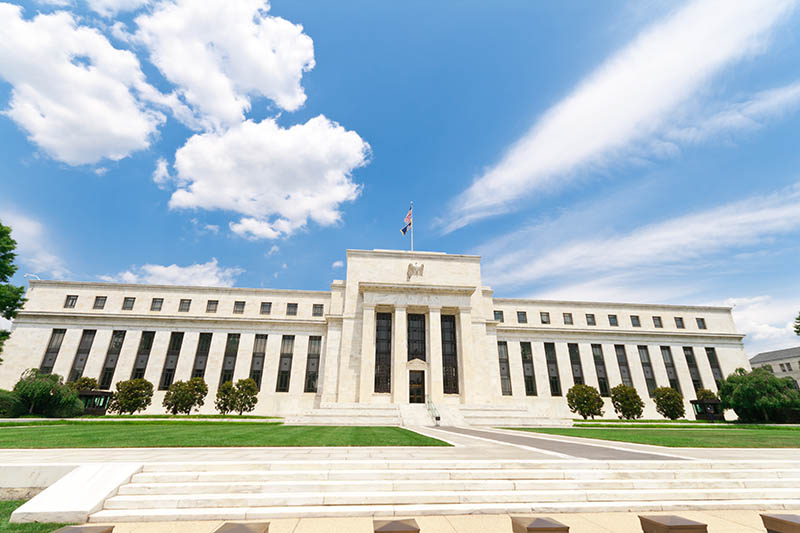(Justin Vaughn, Editor, Options Trading Report)
U.S. stocks nudged higher Friday, steadied by a solid employment report that showed the country’s jobless rate returning to pre-pandemic levels. Given the booming labor market, the March employment data reported on Friday showed non-farm payrolls continuing to grow robustly, up 431,000 last month (March) after an upwardly revised 750,000 increase in February. March’s jobless rate fell to a post-pandemic low of 3.6% from 3.8% the previous month, and for the right reason, workers are going back to work. In the past ‘month’ the central bank boosted its federal-funded rate target for the first time since 2018 and ‘signaled’ its intent to begin reversing the emergency monetary stimulus it began in March 2020 to ‘counter the pandemic’s effects.’ “The yield on the two-year note-the treasury’s coupon most acutely sensitive to shifts in Fed policy-jumped a huge 112 basis points in that time. The 10-year yield rose by 65 basis points, also a considerable increase in a relatively short span,” says Randall W. Forsyth of Barron’s. (A basis point is 1/100th of a percentage point). The yield on the 10-year note settled at 2.3764% from 2.326% Thursday. Yields have climbed for five of the past seven quarters as investors prepare for the Fed to keep raising interest rates to ‘quell inflation.’
The Dow Jones Industrial Average rose 139.92 or 0.4% to 34818.27, while the S&P 500 climbed 15.45 points or 0.3% to 4545.86, and the Nasdaq Composite added 40.38 points or 0.3% to 14261.50. All three indexes started the day higher, they edged lower in mid-day trading as yields on government bonds surged, then climbed again to end the day in the ‘green,’ (Friday). The ‘whipsawed trading session’ came a day after the S&P 500 closed out its biggest quarterly decline since the start of 2020, falling about 5% for the first three months of the year. Of particular concern to many managers is the rise in commodity prices fueling inflation. The rally in prices for oil, grains, and metals has added to expectations that the Fed will end years of easy monetary policy that propelled stocks higher. For the Fed, a key factor in deciding how fast to raise rates is the state of the labor market.
Europe Refuses to Pay Russia Rubles for Gas…Russia’s Putin has refused to accept any payments (for natural gas) in any currency other than rubles, not euros, not dollars. His unfriendly counterparts across the European Union have flatly refused. Russia needs cash, as two-thirds of its foreign reserves are frozen by sanctions, and the central bank reported that it has depleted $39 billion of what’s left since mid-February. Putin’s presumed objective is to re-inject liquidity into the ruble, which sanctions have made all but untradeable. “A free-falling ruble is part of the point of sanctions,” says Samantha Gross, director of the energy security and climate initiative at the Brookings think tank. Germany, Gazprom’s biggest and formerly most friendly customer, says Marcel Dirsus, a fellow at Kiel University’s Institute for Security Policy “There’s more and more pressure for Germany to stop financing a hostile power. Zero dependency on Russia is not if, but when.”
Lithium Prices Remain High… Electric vehicles have seen strong sales growth in the past two years, contributing to a significant climb in prices for lithium needed to build the batteries that power them. The recent moves raise concerns about shortages in supplies of the commodity that could last a decade or more. In a February report, market consultancy AutoPacific forecast fully electric light-vehicle sales in the U.S. of 669,200 units in 2022, up from 262,000 in 2020, a staggering rise. The EV market accounts for almost 80% of lithium-ion battery demand, according to a report from Jiayue Zheng, a consultant at Wood MacKenzie, a unit of Verisk Analytics. Ms. Zhang believes that battery supply won’t meet demand until 2023. “There have been some big increases in lithium supply, but much bigger increases in demand,” says Cameron Perks, senior analyst at Benchmark Mineral Intelligence. The recent run-up in oil prices has sped up demand for EVs, along with inflationary spill-offs. “As EV demand grows, lithium demand will grow, and we expect shortages for the next 10 (to) 15 years, at least,” says Keith Phillips of Piedmont Lithium.
RUMBLINGS ON THE STREET
Fahad Kamal, chief investment officer at Kleinwort Hambros, WSJ “The longer the conflict (Ukraine) lasts, the higher the upside to inflation, the lower the downside to growth. It’s massively, radically uncertain.”
Randall W. Forsyth, lead writer, UP & DOWN WALL STREET, Barron’s “Indeed, the stock market has had ‘everything but the kitchen sink,’ thrown at it in the past month, with the war in Ukraine and the surge in oil prices piked on top of higher interest rates. Instead of 1999, maybe we’re partying like 2007, when Citi’s former CEO famously said he was still dancing as long as the music played.”
Jack Ablin, Cresset Capital Chief Investment Officer, Barron’s “It’s been mystifying. I think the bond market is sober, and the equity market is quixotic.”
Peter Boockvar, chief investment officer at New Jersey-based financial planning and wealth management firm Bleakley Advisory Group, Barron’s “An existing homeowner, you can argue, is playing with house money,” he says. “That first-time buyer doesn’t have that equity appreciation that an existing buyer has,” he added.
THE NUMBERS – Barron’s
35% – U.S. corporate profit growth in 2021, the highest since 1950
2.14M – Barrels of Russian oil shipped by sea in the week ended March 21-lowest in eight months
135 – Number of Terawatt hours of energy consumed by the global Bitcoin industry, more than Norway’s 124
19.2% – Annualized home-price increase in January, above the 18.9% in December, according to S&P CoreLogic Case-Shiller

